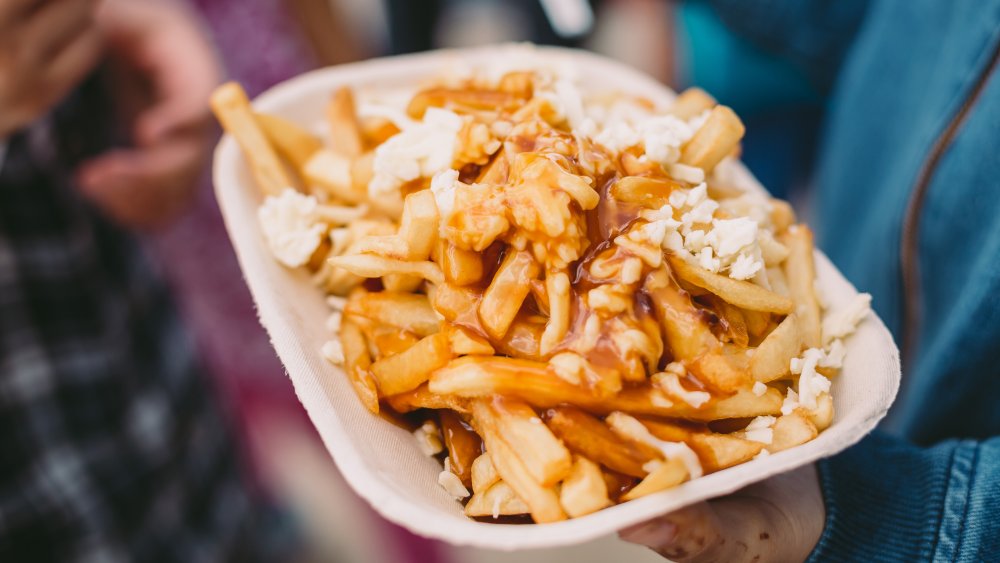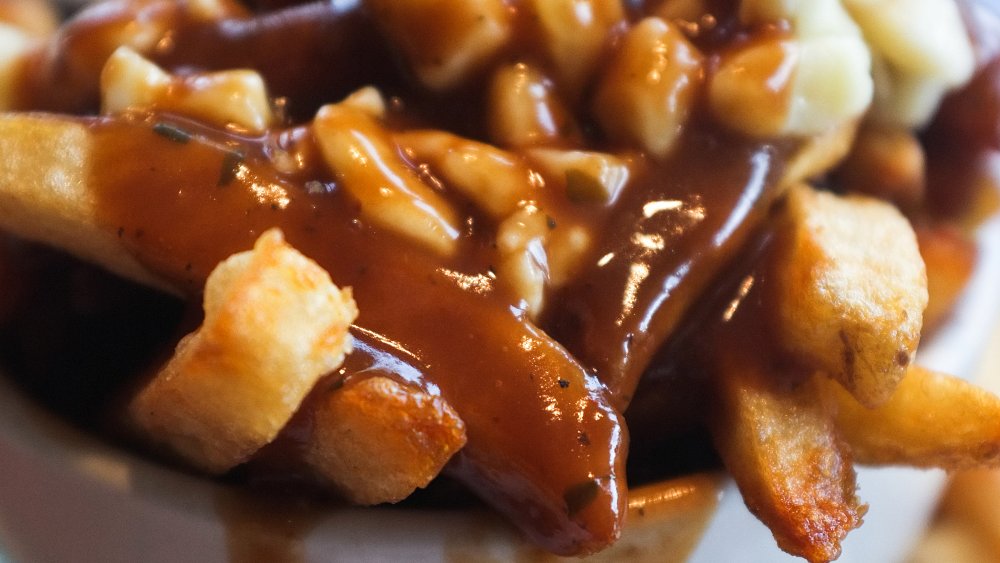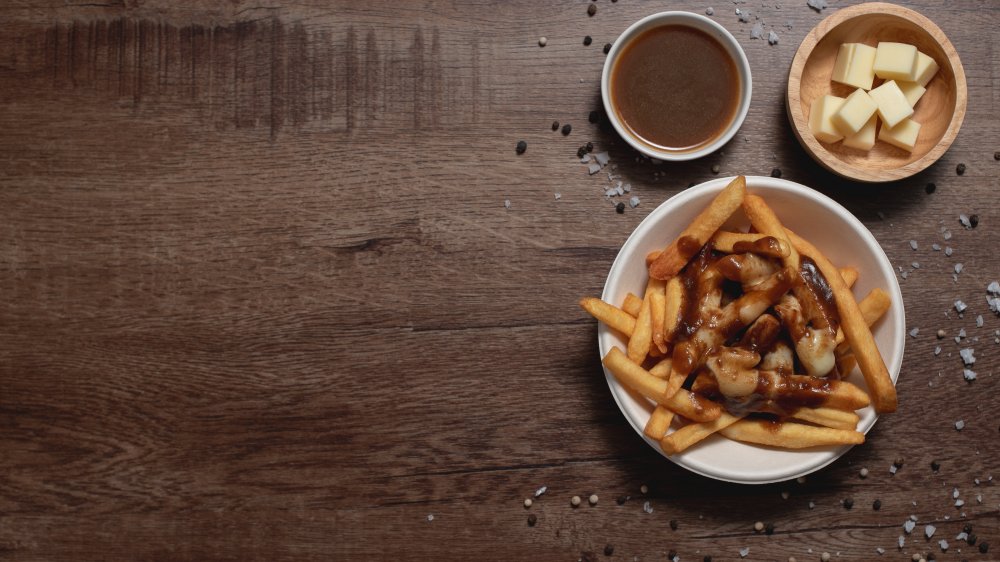The Untold Truth Of Poutine
Poutine has been called many things. Some people think of it as the national dish of Canada (via National Foods). Others call it an instant artery-clogger, and there's even a restaurant in Montreal that offers the bravest among its patrons with a 15-pound monstrosity called "The Heart Attack" (via Time Out).
Poutine is comprised of three main ingredients: French fries, brown gravy, and cheese curds. It comes from rural Quebec and has been traced back to the 1950s (via La Banquise). However, as with so many famous foods, there is some debate about the origin of the dish.
The most popular version of the story traces the dish to a restaurant called "Le Lutin Qui Rit" (The Laughing Elf) where a patron asked the chef to mix cheese curds with the fries. Yet another restaurant, Le Roy Jucep, went so far as to register a trademark that claims that they're the inventors of the dish. Others still think that the dish came from the Nicolet or Saint-Hyacinthe regions, given that they're regions of the province known for their cheese curd production.
Characteristics of poutine
The name is thought to come from the Quebecois slang word for "a mess" — "poutine" — because let's be honest, it's not exactly the world's most beautiful food (via Mental Floss). However, there are also people who believe that the English "pudding" may have played a role in naming. And although the spelling of the dish may suggest that the dish is pronounced "poo-teen," a quick trip to Montreal or Quebec City would confirm that the Quebecois call it "poo-tin."
Even though the dish is made of only three ingredients, there are a number of requirements for each component of the dish to ensure that the poutine is up to par.
First of all, the fries for poutine must be thick. Steak fries would be a good way to describe the size and shape of fries used for poutine. Shoestring fries aren't going to cut it (via Delishably). Next, the curds are best when they're fresh and still squeaky. They should soften when the gravy is added on top of them, but shouldn't melt completely. The gravy ought to be thick enough to not be soupy, but thin enough to make its way to the bottom of the fries and coat the whole dish.
Poutine spinoffs
Though Canadian-style poutine is now a relatively common dish in the United States, especially areas near a shared border with Canada (especially Quebec), it is often thought that its first introduction to the United States market was via New Jersey, where cheddar cheese or mozzarella was used in lieu of cheese curds. This American take on the dish became known as Disco Fries.
In the same vein, a number of toppings and variations have been introduced to varying degrees of success. Some have added bacon, maple syrup, foie gras, or lobster as a topping, while others have experimented with the use of sweet potato or unpeeled potato. Peas and green onions have also sometimes been sprinkled atop the dish in a vain effort to make the dish appear slightly more healthy with a bit of greenery. Vegan options are available at certain establishments as well with a mushroom gravy and a plant-based cheese sauce (via Maclean's)
While it's a pretty rich dish, its heaviness has not stopped professional eaters from going for the gold at the World Poutine Eating Championship. In 2019, American Joey Chestnut, best known for eating copious amounts of hot dogs in small periods of time (via YouTube), set a world record by consuming 29 pounds in just ten minutes.
It's so popular in Canada that National Poutine Day is observed on April 11th annually, and in Quebec, it's so widely eaten that McDonald's and Burger King locations in the province sell it as a side dish.


